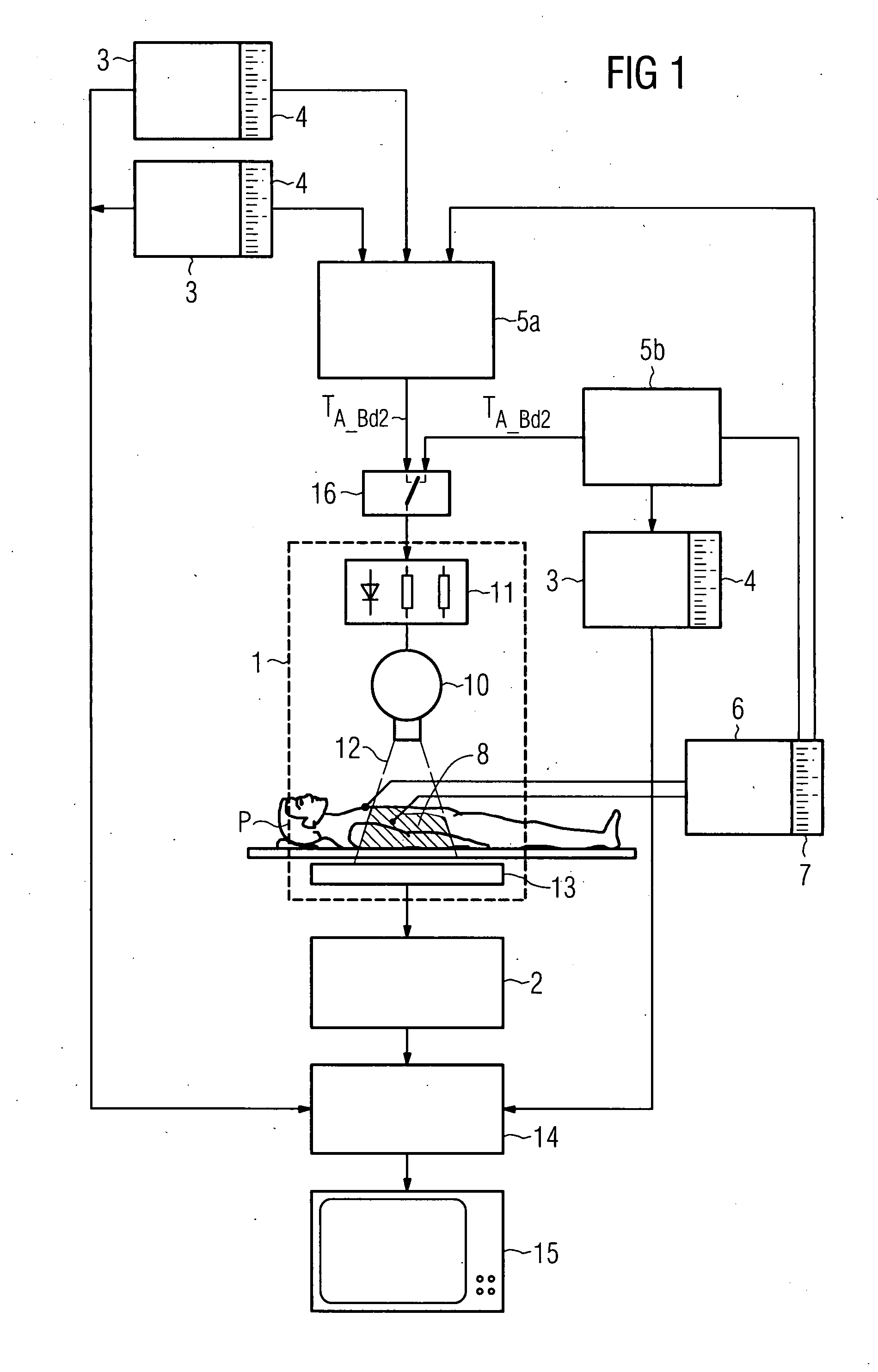[0012] The object of the invention is therefore to specify a device and a method for automatically and cost-effectively
synchronizing two image data sets which minimizes the recordings by the image capture device and likewise reduces the operating costs of the image capture device. The object of the invention is also to reduce the
radiation dose where organisms are directly or indirectly exposed to same.
[0014] With reference to the medical
engineering field, the abovementioned means can include e.g. a separate
central unit which receives, via one interface, information concerning the recording instant of the first image data set. This information is here preferably ECG information used for deriving the triggering instant for activating the image capture device. The information can be combined differently depending on the different image data formats and therefore also the different filing formats of this information. In the abovementioned field of application, the necessary current ECG information of a patient is then read in via another interface. In the simplest case this can be solely the trigger
signal of the R-spike. The triggering instant derived or calculated in the
central unit is fed out of the
central unit and applied to the image capture device, e.g. the x-
ray generator of an x-
ray machine. The image capture device is therefore controlled automatically and without manual intervention by the interventional team in such a way that current recordings of the patient are only permitted and carried out—i.e. a second image data set is produced—at an instant when the recordings are in
synchronism with the first generally pre-operative image data set in respect of the movement phase. The invention is not limited to deriving a triggering instant from the ECG information. Reference is also explicitly made to the possibility of triggering by other physiological parameters in medical
engineering such as
respiration. In addition, application of the invention to areas outside the medical field e.g. for imaging of oscillating systems would also be conceivable. Unlike in the prior art, the intention here is not to synchronize 3D image data to a continuously generated image
data stream, but conversely the recording of the current image data set is synchronized to an older image data set. This also means that the
radiation dose to which e.g. the patient must be exposed during the intervention can be reduced to the bare minimum. As the device, in addition, performs the deriving of the triggering
signal for the image capture device automatically and without interaction by the examining clinician, the time-consuming and in some cases error-prone evaluation of the first image data set is eliminated and a high degree of synchronization quality is achieved. Interfering
motion artifacts are nevertheless minimized.
[0018] In a further advantageous embodiment of the invention, the device for synchronizing an image capture device is characterized in that the means provided switch between a number of first image data sets. It may be advantageous to insert 2D image data recorded during the intervention into pre-operative image data sets and therefore synchronize them with the latter which have been created using different recording methods. As each recording method has its advantages, but on the other hand also suffers from certain limitations, this enables the interventional team to be provided with optimum image support. The switching and synchronization to various 3D image data sets can take place automatically and sequentially, but quasi-
parallel processing would also be possible here. In another variant, switching to another 3D image data set can also take place
on demand by the interventional team. In all the abovementioned cases, different display units for the integrated display of the pre-operative and the current image data set are possible, but the use of a single display unit and the control of same using the various integrated image data sets would also be conceivable.
 Login to View More
Login to View More  Login to View More
Login to View More 


